Campaign Monitor vs MailChimp
November 12, 2023 | Author: Sandeep Sharma
11
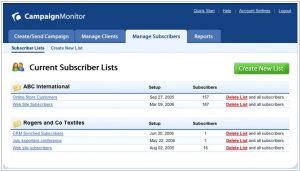
Campaign Monitor makes it easy to attract new subscribers, send them beautiful email newsletters and see stunning reports on the results. Our template builder makes it easy for anyone to design beautiful email templates in minutes. Choose from a range of layouts, add your logo and tweak the colors. Each template is automatically optimized for mobile devices and looks great in every email client.
40
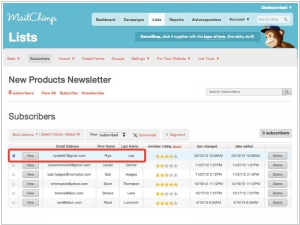
Online email marketing solution to manage contacts, send emails and track results. Offers plug-ins for other programs. Get insight about your subscribers and keep your contacts in one place with subscriber profiles. MailChimp helps you email the right people at the right time. In addition to our built-in segmentation and targeting options, you can automate triggered emails based on your subscribers' website activity.
Campaign Monitor and MailChimp are both popular email marketing platforms with a focus on creating and managing effective email campaigns, but they have some key differences:
1. User Interface and Design: Campaign Monitor is known for its sleek and intuitive user interface, offering a seamless experience for designing and customizing email templates. It provides a range of professionally designed templates, allowing users to create visually appealing emails with ease. MailChimp also offers a user-friendly interface but provides more flexibility and customization options for designing email templates.
2. Pricing Structure: Campaign Monitor offers a tiered pricing structure based on the number of subscribers, allowing users to choose a plan that fits their specific needs. It offers more advanced features, such as automation and segmentation, in higher-tier plans. MailChimp, on the other hand, follows a similar pricing structure but also provides a freemium plan with limited features for businesses with smaller subscriber lists.
3. Automation and Segmentation: Both platforms offer automation and segmentation capabilities to target specific audiences and send personalized email campaigns. However, MailChimp provides more advanced automation features, including customer journeys and behavioral triggers, allowing for more sophisticated and personalized campaigns.
4. Integrations and Ecosystem: MailChimp has a broader range of integrations with third-party tools and platforms, making it easier to connect and synchronize data with other marketing and CRM systems. Campaign Monitor also offers integrations but has a more limited ecosystem compared to MailChimp.
See also: Top 10 Email Marketing Solutions
1. User Interface and Design: Campaign Monitor is known for its sleek and intuitive user interface, offering a seamless experience for designing and customizing email templates. It provides a range of professionally designed templates, allowing users to create visually appealing emails with ease. MailChimp also offers a user-friendly interface but provides more flexibility and customization options for designing email templates.
2. Pricing Structure: Campaign Monitor offers a tiered pricing structure based on the number of subscribers, allowing users to choose a plan that fits their specific needs. It offers more advanced features, such as automation and segmentation, in higher-tier plans. MailChimp, on the other hand, follows a similar pricing structure but also provides a freemium plan with limited features for businesses with smaller subscriber lists.
3. Automation and Segmentation: Both platforms offer automation and segmentation capabilities to target specific audiences and send personalized email campaigns. However, MailChimp provides more advanced automation features, including customer journeys and behavioral triggers, allowing for more sophisticated and personalized campaigns.
4. Integrations and Ecosystem: MailChimp has a broader range of integrations with third-party tools and platforms, making it easier to connect and synchronize data with other marketing and CRM systems. Campaign Monitor also offers integrations but has a more limited ecosystem compared to MailChimp.
See also: Top 10 Email Marketing Solutions
Campaign Monitor vs MailChimp in our news:
2021. Intuit to acquire Mailchimp
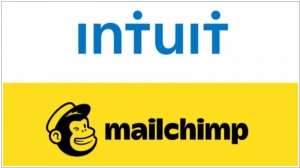
Intuit has made a significant move in the email marketing industry by acquiring Mailchimp for a whopping $12 billion. Although Intuit is not widely recognized in the email marketing space, this strategic purchase aligns with their ambitions to strengthen their position as a hub for small business growth and disrupt the small business midmarket. Intuit's flagship product, QuickBooks, is already a well-known offering among SMBs, and acquiring Mailchimp presents an opportunity to expand their service offerings to their existing customer base. While it may seem like a bold move, Intuit's decision is likely driven by the anticipation of significant corporate synergies that will outweigh the initial investment.
2021. Mailchimp moves into e-commerce
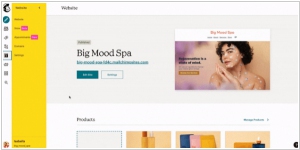
Over the past few years, Mailchimp has evolved from a simple newsletter platform into a comprehensive marketing company. While the platform has already provided integrations with various e-commerce websites, it is now introducing its own online stores tailored to small and medium businesses. Additionally, Mailchimp is launching a new appointment booking service. These new offerings are part of Mailchimp's "Websites & Commerce" plans, which include a free tier providing most of the essential functionalities. Users on the free plan will incur a 2% transaction fee. For $10/month, Mailchimp will remove its branding, provide access to email and chat support, and reduce the transaction fee to 1.5%.
2020. Mailchimp launches new AI marketing tools
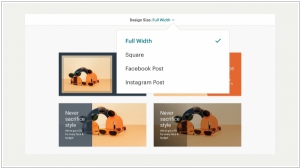
Mailchimp has introduced a suite of AI-powered tools aimed at providing small businesses with the same advanced capabilities utilized by their larger counterparts. These tools encompass personalized product recommendations for customers and predictive analytics for targeted marketing, enabling businesses to identify potential buyers more effectively. Additionally, Mailchimp has unveiled a new AI-driven tool that assists business owners in creating visually appealing assets, leveraging its acquisition of Sawa. Furthermore, a tool has been introduced to aid in crafting compelling email subject lines, helping businesses enhance their communication strategies.
2019. Mailchimp acquired e-commerce platform LemonStand and broke up with Shopify
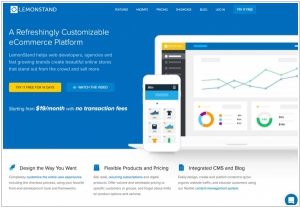
Mailchimp has made the decision to discontinue its app that allowed users to utilize their Shopify data for creating targeted email campaigns. This move came after disagreements arose between the two companies regarding the sharing of customer data. Interestingly, prior to parting ways with Shopify, Mailchimp quietly acquired LemonStand, a smaller competitor of the e-commerce platform. This acquisition was aimed at enhancing Mailchimp's platform by incorporating more integrated e-commerce features. It serves as an indication of the growing importance of Mailchimp's e-commerce business. In the past year, Mailchimp collaborated with Square to introduce shoppable landing pages, showcasing the company's dedication to developing native e-commerce functionalities. While Mailchimp continues to expand its platform's e-commerce capabilities, it remains open to collaborating with third-party providers (excluding Shopify, the largest among them) to offer additional functionality to its users.
2018. Mailchimp partnered with Square to launch shoppable landing pages
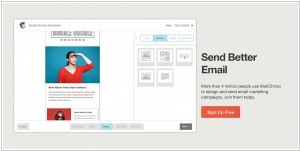
Email newsletter service Mailchimp has announced a collaboration with Square, enabling its users to create landing pages integrated with e-commerce functionalities. These shoppable landing pages serve as an additional sales channel for businesses, facilitating the selling of limited-edition products and targeted promotions. While Mailchimp's landing pages have been available for some time, their primary purpose was to capture email addresses or direct users to a store. With this partnership, customers can now establish complete shopping experiences with built-in payment options directly on these pages. To simplify the process, Mailchimp provides a range of pre-designed templates and a user-friendly drag-and-drop builder. Square will apply a flat processing rate for transactions, while Mailchimp offers this service at no additional cost to its users.
2017. Mailchimp’s marketing automation tools are now available for free
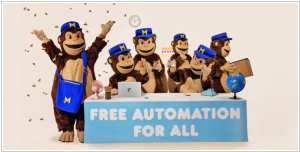
The mailing service MailChimp provides a range of advanced marketing tools to its users, including the ability to follow up with online shoppers. Excitingly, starting today, these advanced marketing automation services are being offered for free to all MailChimp users, even those on the free plan. This means that any online business can now effortlessly create automatic emails that are triggered, for instance, a day after a virtual shopping cart is abandoned or a day after a first purchase is made. Additionally, users can establish a series of welcome emails or utilize the service for transactional messages such as receipts, shipping updates, or invoices. This expansion of free services from MailChimp empowers businesses to enhance their customer communication and engagement without incurring additional costs.
2017. MailChimp combines email marketing with Facebook Ads
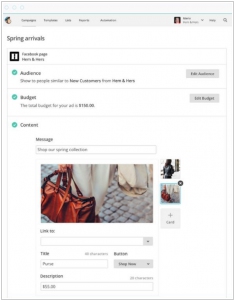
MailChimp has expanded its offerings beyond email marketing by introducing a Facebook advertising integration. This integration enables users of the email marketing platform to create Facebook ads and monitor their performance within the same platform. By leveraging MailChimp's intelligent segmentation capabilities to target recent customers or engaged subscribers, businesses can efficiently generate lookalike audiences on Facebook. The rollout of Facebook Ad Campaigns will occur gradually, with availability for all customers expected by February 2.


